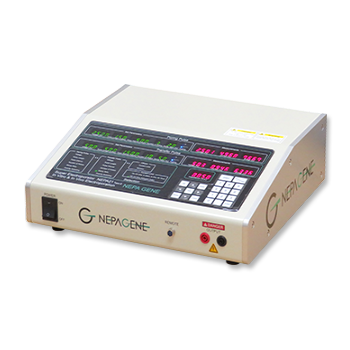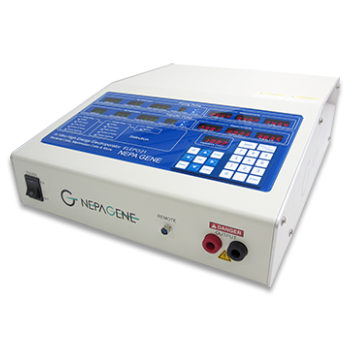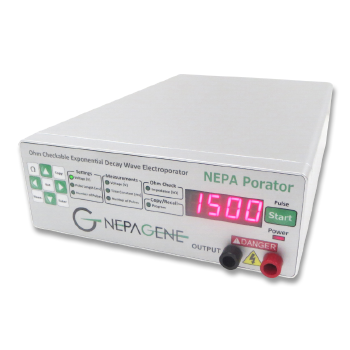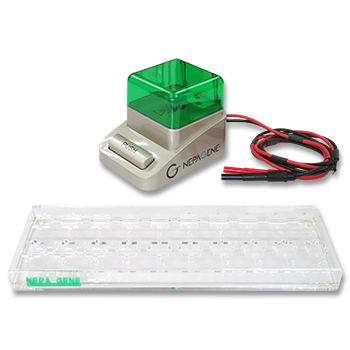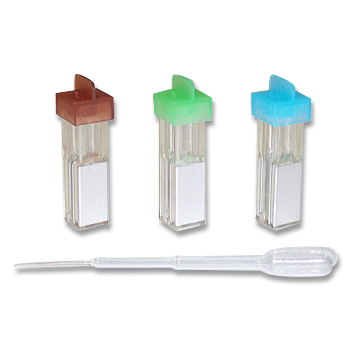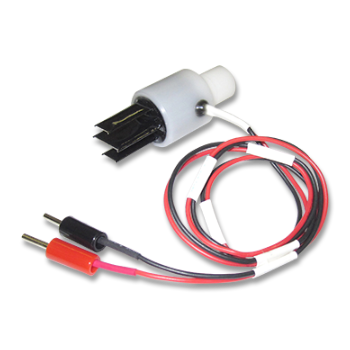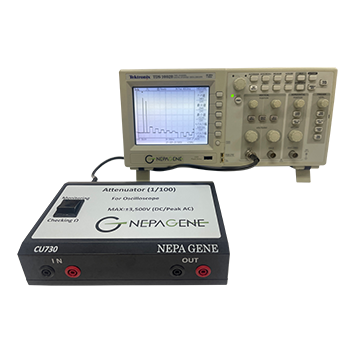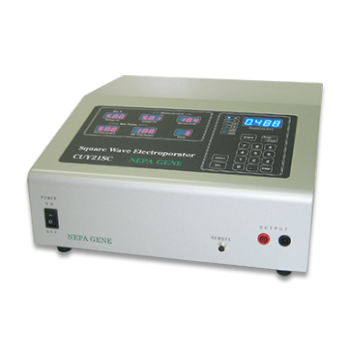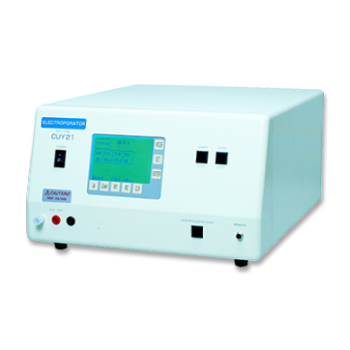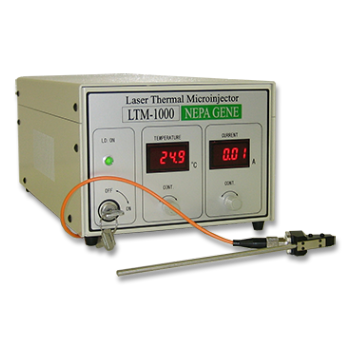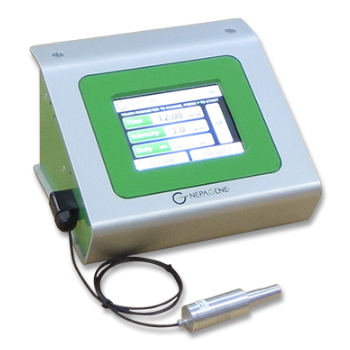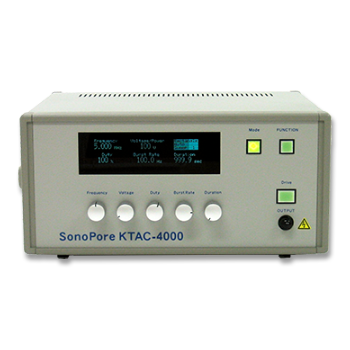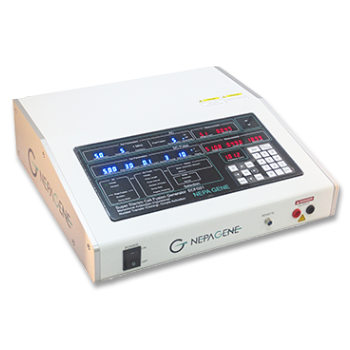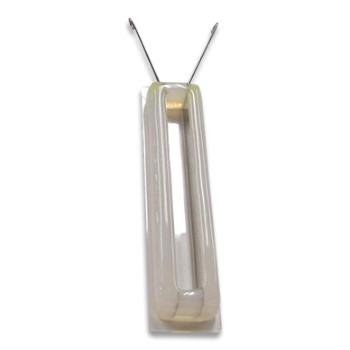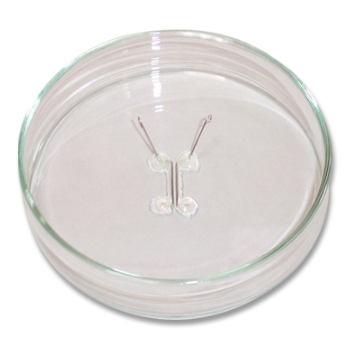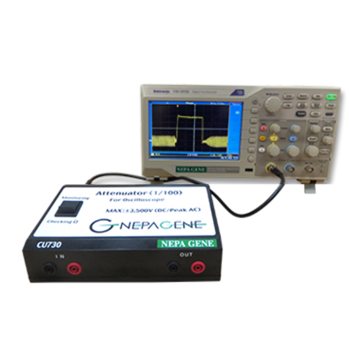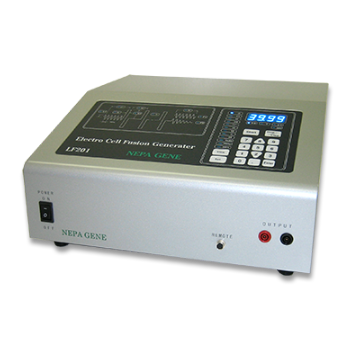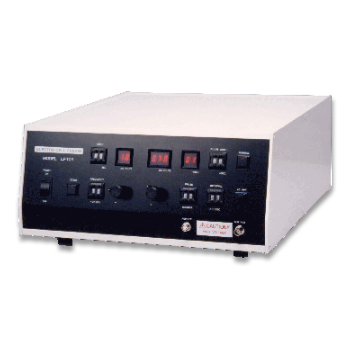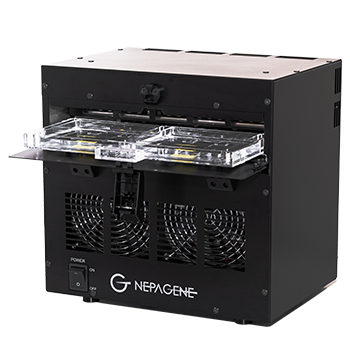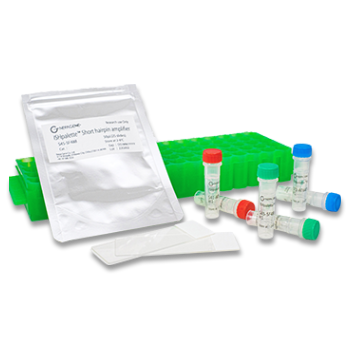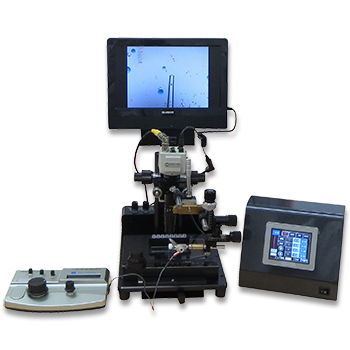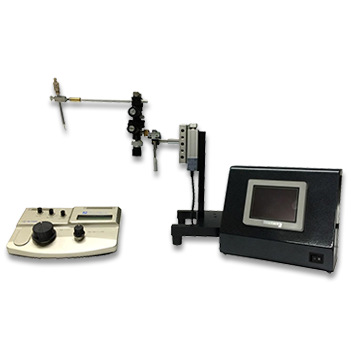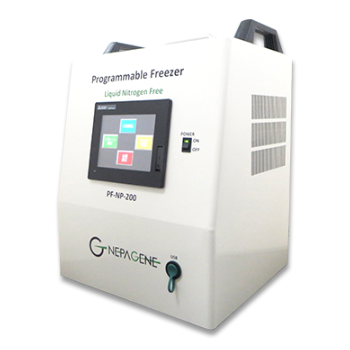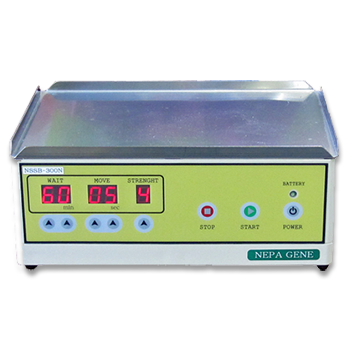Transfection into Cell Lines by Electroporation
The Nepa Gene electroporators make it possible to achieve high transfection efficiency and high viability without resourse to special buffers. It works not only for plasmid DNA but also for siRNA, mRNA, shRNA, proteins and more.
APPLICATIONS
Transfection into Cell Line
293T(HEK293T): Human Embryonic Kidney Cells
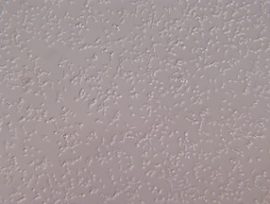
Viabiliy:83%
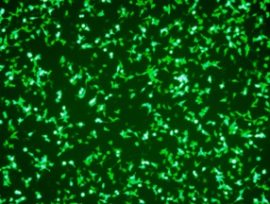
Transfection Effeciency:87%
Jurkat: Human T-cell Leukemia Cells
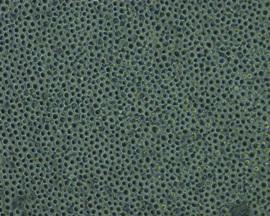
Viability:73%
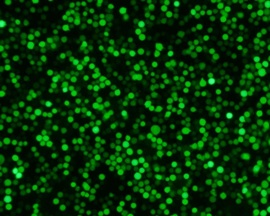
Transfection Efficiency:94%
Neuro-2a: Mouse Neuroblastoma Cells
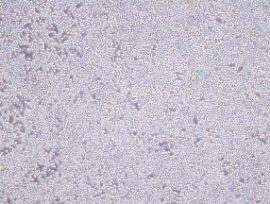
Viability:90%
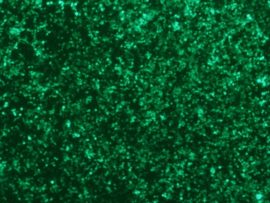
Transfection Efficiency:90%
Transfection into Cell Lines
Species: Human
See the cell images by clicking the cell names.
V: Viability, TE: Transfection Efficiency.
| Cell Lines | V | TE | Cell Lines | V | TE | |
| HeLa Human Cervical Carcinoma Cells | 87% | 93% | HeLa-K Human Cervical Carcinoma Cells | 90% | 90% | |
| 293 Human Embryonic Kidney Cells | 92% | 91% | 293 Human Embryonic Kidney Cells | 90% | 70% | |
| 293 Human Embryonic Kidney Cells | 72% | 85% | 293T Human Embryonic Kidney Cells | 90% | 95% | |
| 293T Human Embryonic Kidney Cells | 83% | 87% | 293T Human Embryonic Kidney Cells | 70% | 99% | |
| TIG-3 Human Embryonic Lung Fibroblasts | 90% | 80% | TIG-7 Human Embryonic Lung Fibroblasts | 89% | 76% | |
| MRC-5 Human Embryonic Lung Fibroblasts | 85% | 90% | WI-38 Human Embryonic Lung Fibroblasts | 80% | 70% | |
| WI-38 VA13 Human Lung Fibroblasts | 93% | 82% | CCD18-Co Human Colon Fibroblasts | 99% | 61% | |
| HaCat Human Keratinocyte Cells | 99% | 69% | HDF Human Dermal Fibroblasts (106-05) | 90% | 90% | |
| TIG-109 Human Skin Fibroblasts | 70% | 60% | HFE145 Human Non-Cancerous Gastric Epithelial Cells | 80% | 50% | |
| BEAS-2B Human Bronchial Epithelial Cells | 90% | 80% | BEAS-2B Human Bronchial Epithelial Cells | 75% | 96% | |
| KMST-6 Human Fibroblasts | 70% | 60% | SUSM-1 Human Fibroblasts | 77% | 71% | |
| HT1080 Human Fibrosarcoma Cells | 93% | 81% | HT1080 Human Fibrosarcoma Cells | 80% | 90% | |
| SW872 Human Liposarcoma Cells | 95% | 83% | MG-63 Human Osteosarcoma Cells | 70% | 80% | |
| Saos-2 Human Osteosarcoma Cells | 80% | 70% | Saos-2 Human Osteosarcoma Cells | 60% | 75% | |
| U2OS Human Osteosarcoma Cells | 86% | 74% | U2OS Human Osteosarcoma Cells | 70% | 80% | |
| SEKI Human Malignant Melanoma Cells | 80% | 75% | PANC-1 Human Pancreatic Carcinoma Cells | 78% | 70% | |
| PANC-1 Human Pancreatic Carcinoma Cells | 55% | 75% | MIA-PaCa-2 Human Pancreatic Carcinoma Cells | 80% | 77% | |
| HepG2 Human Hepatoma Cells | 88% | 76% | HuH-7 Human Hepatoma Cells | 90% | 86% | |
| HuH-7 Human Hepatoma Cells | 82% | 85% | HLF Human Liver Cancer Cells | 90% | 85% | |
| H69 Human Small-Cell Lung Cancer Cells | 90% | 85% | ||||
| TFK-1 Human Bile Duct Adenocarcinoma Cells | 50% | 70% | LC319 Human Lung Cancer Cells | 95% | 66% | |
| NCI-H69 Human Small-Cell Lung Cancer Cells | 97% | 70% | H1299 Human Lung Cancer Cells | 80% | 80% | |
| H1299 Human Lung Cancer Cells | 90% | 90% | HSC-2 Human Squamous Carcinoma Cells | 93% | 85% | |
| KB31 Human Epidermoid Carcinoma Cells | 58% | 64% | Ca9-22 Human Squamous Carcinoma Cells | 60% | 60% | |
| HSC-3 Human Squamous Carcinoma Cells | 93% | 98% | HEp-2 Human Laryngeal Carcinoma Cells | 70% | 90% | |
| HGF Human Gingival Fibroblasts | MCF-7 Human Breast Cancer Cells | 95% | 80% | |||
| MCF-7 Human Breast Cancer Cells | 81% | 65% | T47D Human Breast Cancer Cells | 90% | 85% | |
| MCF-7 Human Breast Cancer Cells | 80% | 70% | MDA-MB-231 Human Breast Cancer Cells | 85% | 90% | |
| BT-20 Human Breast Cancer Cells | 70% | 80% | MCF 10A Human Breast Cells | |||
| MCF 10A Human Breast Cells | 90% | 80% | A549 Human Lung Adenocarcinoma Cells | 85% | 90% | |
| MCF 10A Human Breast Cells | 97% | 69% | GC38 Human Gastric Cancer Cells | 80% | 80% | |
| NUGC-3 Human Gastric Carcinoma Cells | 65% | 77% | NUGC-3 Human Gastric Carcinoma Cells | 73% | 68% | |
| MKN-45 Human Gastric Cancer Cells | 78% | 73% | Human Patient-Derived Gastric Cancer Cells | 44% | 74% | |
| LNCaP Human Prostate Carcinoma | 71% | 90% | PC-3 Human Prostate Cancer Cells | 90% | 95% | |
| DU145 Human Prostate Cancer Cells | 94% | 60% | PNT2 Human Prostate Epithelial Cells | 85% | 80% | |
| PC-3 Human prostate Cancer Cells | 86% | 55% | HCT116 Human Colon Cancer Cells | 80% | 95% | |
| Lovo Human Colon Adenocarcinoma Cells | 85% | 60% | HCT116 Human Colon Cancer Cells | 95% | 90% | |
| HCT116 Human Colon Cancer Cells | 80% | 80% | Caco-2 Human Colon Cancer Cells | 85% | 80% | |
| Caco-2 Human Colon Cancer Cells | 95% | 80% | OVCAR-3 Human Colon Cancer Cells | 90% | 79% | |
| SW620 Human Colon Cancer Cells | 80% | 80% | RMG-1 Human Ovarian Clear Cell Adenocarcinoma | 97% | 67% | |
| SKOV-3 Human Ovarian Carcinoma Cells | 90% | 90% | SH-SY5Y Human Neuroblastoma Cells | 60% | 90% | |
| SK-N-SH Human Neuroblastoma Cells | 95% | 95% | SH-SY5Y Human Neuroblastoma Cells | 79% | 60% | |
| SH-SY5Y Human Neuroblastoma Cells | 70% | 70% | NB69 Human Neuroblastoma Cells | 95% | 80% | |
| NB9 Human Neuroblastoma Cells | 70% | 70% | KG-1-C Human Oligodendroglial Cells | 85% | 60% | |
| NB-39-nu Human Neuroblastoma Cells | 60% | 63% | NP3 Human Glioblastoma Cells | 98% | 62% | |
| A172 Human Glioblastoma Cells | 85% | 70% | 1321N1 Human Astrocytoma Cells | 80% | 80% | |
| U87 MG Human Glioblastoma/Astrocytoma Cells | 70% | 55% | Immortalized Human Pericytes | 83% | 50% | |
| U-251 Human Glioblastoma Cells | 90% | 60% | ||||
| iHAM-4 Human Amniotic Mesenchymal Cells | 59% | 95% | HTR-8/Svneo Human Trophoblast Cells | 95% | 67% | |
| Human Dental Pulp Cells | 90% | 85% | Human Dental Pulp Cells | 85% | 69% | |
| HK-2 Human Renal Proximal Tubule Epithelial Cells | 50% | 90% | RPTEC Human Renal Proximal Tubule Epithelial Cells | 70% | 85% | |
| SRA 01/04 Human Lens Epithelial Cells | 97% | 80% | ARPE-19 Retinal Pigment Epithelium Cells | 96% | 69% | |
| RPE Retinal Pigment Epithelium Cells | 90% | 70% | RPE-1 Retinal Pigment Epithelium Cells | 95% | 80% | |
| Jurkat Human T-cell Leukemia Cells | 73% | 94% | Jurkat Human T-cell Leukemia Cells | 89% | 85% | |
| Jurkat Human T-cell Leukemia Cells | 85% | 85% | Jurkat Human T-cell Leukemia Cells | 99% | 92% | |
| ED40515 Human T-cell Leukemia CellsJurkat Human T-cell Leukemia Cells | 82% | 84% | Hut78 Human T-cell Lymphoma Cells | 51% | 74% | |
| SNT16 Human T-cell Lymphoma Cells | 85% | 84% | Jeko-1 Human Mantle Cell Lymphoma (MCL) Cells | 80% | 63% | |
| Jeko-1 Human Mantle Cell Lymphoma (MCL) Cells | 82% | 71% | MV4-11 Human Acute Myeloid Leukemia Cells | 70% | 60% | |
| MOLT-4 Human Acute Lymphoblastic Leukemia Cells | 95% | 70% | MEC1 Human Chronic Lymphocytic Leukemia Cells | >90% | >90% | |
| 697 Human Pre-B Acute Lymphoblastic Leukemia Cells | 68% | 93% | Nalm-6 Human B-cell Precursor Leukemia Cells | 97% | 76% | |
| Nalm-6 Human B-cell Precursor Leukemia Cells | 77% | 82% | KG-1 Human Acute Myeloid Leukemia Cells | 70% | 65% | |
| KG-1 Human Acute Myeloid Leukemia Cells | 60% | 65% | PL-21 Human Acute Myeloid Leukemia Cells | 51% | 73% | |
| MOLM-16 Human Acute Myeloid Leukemia Cells | 74% | 68% | USCD/AML1 Human Leukemia Cells | 50% | 50% | |
| Kasumi-1 Human Acute Myeloid Leukemia Cells | 66% | 79% | KOPT-K1 Human T cell Acute Lymphoblastic Leukemia (T-ALL) Cells | 80% | 60% | |
| M7 Human Acute Non Lymphocytic Leukemia | 85% | 80% | GM12878 Human B-Lymphoblastoid Cells | 93% | 83% | |
| Loucy Human T cell Acute Lymphoblastic Leukemia (T-ALL) Cells | 73% | 50% | Human EBV-immortalized B Cells | 58% | 53% | |
| T2 Human T and B lymphoblast Cells | 97% | 97% | Raji Human Burkitt’s Lymphoma Cells | 97% | 83% | |
| Namalwa Human Burkitt’s Lymphoma Cells | 70% | 75% | Raji Human Burkitt’s Lymphoma Cells | 85% | 79% | |
| Raji Human Burkitt’s Lymphoma Cells | 95% | 96% | SU-DHL-4 Human Burkitt’s Lymphoma Cells | 79% | 68% | |
| Toledo Human Burkitt’s Lymphoma Cells | 97% | 83% | SU-DHL-10 Human B-cell Lymphoma Cells | 78% | 68% | |
| K562 Human Chronic Myelogenous Leukemia Cells | >90% | 94% | K562 Human Chronic Myelogenous Leukemia Cells | 91% | 99% | |
| K562 Human Chronic Myelogenous Leukemia Cells | >90% | >90% | eHAP1 Human Haploid Cells | 72% | 65% | |
| HL-60 Human Promyelocytic Leukemia Cells | 81% | 82% | HL-60 Human Promyelocytic Leukemia Cells | 80% | 80% | |
| Mutu Ⅰ Human Burkitt Lymphoma Cells | 87% | 91% | Mutu III Human Burkitt Lymphoma Cells | 54% | 92% | |
| PLB-985 Human Myeloid Leukemia Cells | 94% | 92% | ||||
| Ramos Human Burkitt Lymphoma Cells | 92% | 57% | Ramos-Blue Human Burkitt Lymphoma Cells | 80% | 55% | |
| Ramos Human Burkitt Lymphoma Cells | 83% | 57% | BJAB Human EBV-negative Burkitt Lymphoma Cells | 96% | 96% | |
| Z-138 Human Mantle Cell Lymphoma Cells | 93% | 86% | TK6 Human B-Lymphoblast Cells | 84% | 79% | |
| SKM-1 Human MDS-derived Leukaemia Cells | 88% | 83% | THP-1 Human Acute Monocytic Leukemia Cells | 56% | 64% | |
| THP-1 Human Acute Monocytic Leukemia Cells | 76% | 63% | THP-1 Human Acute Monocytic Leukemia Cells | 67% | 85% | |
| THP-1 Human Acute Monocytic Leukemia Cells | 85% | 67% | NK-92MI Human Natural Killer (NK) Cells | 83% | 95% | |
| HMC1.2 Human Mast Leukemia Cells | 77% | 89% | MTA Human Natural Killer-Like Leukemia Cells | 65% | 61% | |
| KHYG-1 Human Natural Killer (NK)Lleukemia Cells | 51% | 71% |
Species: Mouse
See the cell images by clicking the cell names.
V: Viability, TE: Transfection Efficiency.
<
| Cell Lines | V | TE | Cell Lines | V | TE | |
| NIH/3T3 Mouse Embryonic Fibroblasts | 100% | 90% | NIH/3T3 Mouse Embryonic Fibroblasts | 74% | 81% | |
| PT67 Mouse Fibroblasts (RetroPack PT67 cell line) | 91% | 66% | 3T3-L1 Mouse Embryonic Fibroblasts (preadipocytes) | 90% | 90% | |
| MEF Mouse Embryonic Fibroblasts | 90% | 90% | MEF Mouse Embryonic Fibroblasts | 80% | 90% | |
| STO Mouse Embryonic Fibroblasts | 60% | 51% | N7 Mouse Embryonic Hypothalamic cells (immortalized) | 75% | 100% | |
| P19C6 Mouse Embryonic Carcinoma Cells | 90% | 50% | F9 Mouse Testis Teratocarcinoma Cells | 85% | 95% | |
| HL-1 Mouse Cardiac Muscle Cells | 70% | 70% | L Mouse Fibroblasts | 90% | 65% | |
| B16 Mouse Melanoma Cells | 86% | 76% | B16 Mouse Melanoma Cells | 77% | 83% | |
| B16 Mouse Melanoma Cells | 70% | 50% | MC3T3-E1 Mouse Osteoblastic Cells | 85% | 75% | |
| C2C12 Mouse Myoblast Cells | 94% | 90% | C2C12 Mouse Myoblast Cells | 90% | 90% | |
| C2C12 Mouse Myoblast Cells | 80% | 70% | C2C12 Mouse Myoblast Cells | 94% | 96% | |
| bEnd.3 Mouse Brain Endothelial Cells | 80% | 80% | NMuMG Mouse Mammary Gland Epithelial Cells | 80% | 65% | |
| Mouse Podocytes (Kidney Epithelial cells) | 100% | 84% | Mouse Podocytes (Kidney Epithelial cells) | 66% | 68% | |
| SV40 MES 13 Mouse Mesangial Cells | 68% | 72% | LLc1(LL/2) Lewis Lung Cell Carcinoma 1 Cells | 87% | 81% | |
| FM3A Mouse Breast Cancer Cells | 77% | 57% | 4T1 Mouse Breast Cancer Cells | 90% | 95% | |
| Ehrlich Mouse Ehrlich-Lettre Ascites Carcinoma Cells | 76% | 68% | 3134 Mouse Mammary Adenocarcinoma Cells | 100% | 70% | |
| Hepa1-6 Mouse Hepatoma Cells | 50% | 98% | Colon-26 Mouse Colon Adenocarcinoma Cells | 95% | 90% | |
| S180 Mouse Sarcoma Cells | 72% | 57% | LM8 Mouse Osteosarcoma Cells | 90% | 85% | |
| ddy Mouse Endometrial Cells | 60% | 80% | MS-1 Mouse Pancreatic Endothelial Cells | 90% | 90% | |
| AtT-20 Mouse Pituitary Tumor Cells | 80% | 80% | ID-8 Mouse Ovarian Cancer Cells | 95% | 99% | |
| Neuro-2a Mouse Neuroblastoma Cells | 90% | 90% | TtT/GF Mouse Pituitary Folliculo-Stellate-Like Cells | 65% | 83% | |
| GL261 E9 Mouse Glioma Cells | 55% | 57% | BV-2 Mouse Microglial Cells | 92% | 70% | |
| BV-2 Mouse Microglial Cells | 80% | 80% | BV-2 Mouse Microglial Cells | 90% | 50% | |
| SIM-A9 Mouse Microglial Cells | 80% | 57% | ||||
| mDP Mouse Dental Pupilla Cells | 65% | 70% | MEL Mouse Erythroleukemia Cells | 70% | 50% | |
| L1210 Mouse Lymphocytic Leukemia Cells | 85% | 70% | WR19L Mouse T-cell lymphoma Cells | 92% | 60% | |
| EL4 Mouse T-cell lymphoma Cells | 87% | 82% | BA/F3 Mouse pro-B Cells | 91% | 92% | |
| BA/F3 Mouse pro-B Cells | 90% | 90% | A20 Mouse B-cell Lymphoma Cells | 99% | 85% | |
| A20 Mouse B-cell Lymphoma Cells | 70% | 65% | CH12F3 Mouse B Lymphoma Cells | 74% | 77% | |
| WEHI-231 Mouse B-cell Lymphoma Cells | 98% | 73% | P815 Mouse Mastocytoma Cells | 67% | 68% | |
| J774.1 Mouse Macrophage-like Cells | 100% | 70% | RAW264.7 Mouse Macrophage-like Cells | 70% | 56% | |
| RAW264.7 Mouse Macrophage-like Cells | RAW264.7 Mouse Macrophage-like Cells | 70% | 70% | |||
| RAW-D Mouse Macrophage-like Cells | 80% | 80% | MIN6 Mouse Pancreatic Beta Cells | 57% | 71% | |
| DC2.4 Mouse Dendritic Cells | 42% | 66% | XS106 Mouse Dendritic Cells | 61% | 45% | |
| mDC Mouse Myeloid Dendritic Cells | 79% | 72% | 416B Mouse Primitive Myeloid Cells | 89% | 64% | |
| 32D Mouse Myeloid Cells | 88% | MLO-Y4 Mouse Osteocyte-like cells | 99% | 59% | ||
| MC/9 Mouse Mast Cells | 76% | 84% | MC/9 Mouse Mast Cells | 87% | 89% | |
| BMBa Mouse Bone marrow-derived basophils | 45% | 67% | TS Mouse Trophoblast Stem Cells | 59% | 47% | |
| Mouse Hybridoma Cells (lymphocytes and myeloma cells) | 100% | 66% | Mouse T Cell Hybridoma Cells | 69% | 90% |
Species: Rat
See the cell images by clicking the cell names.
V: Viability, TE: Transfection Efficiency.
| Cell Lines | V | TE | Cell Lines | V | TE | |
| PC12 Rat Adrenal Pheochromocytoma Cells | 90% | 70% | H9c2 Rat Ventricular Myoblasts | 71% | 82% | |
| H9c2 Rat Ventricular Myoblasts | 75% | 80% | REF Rat Embryonic Fibroblasts | 90% | 99% | |
| RSC96 Rat Schwann Cells | 70% | 85% | A7r5 Rat Aortic Smooth Muscle Cells | 93% | 75% | |
| C6 Rat Glioma Cells | 80% | 67% | UMR106 Rat Osteoblastic Cells | 80% | 70% | |
| RCS Rat Chondrosarcoma Cells | 75% | 50% | SF2 Rat Dental Epithelial Cells | 80% | 90% | |
| HAT-7 Rat Dental Epithelial Cells | 80% | 90% |
Spiecies: Chinese Hamster
See the cell images by clicking the cell names.
V: Viability, TE: Transfection Efficiency.
| Cell Lines | V | TE | Cell Lines | V | TE | |
| CHO Chinese Hamster Ovary Cells | 74% | 90% | CHO Chinese Hamster Ovary Cells | 98% | 87% | |
| CHO Chinese Hamster Ovary Cells | 97% | 97% | CHO-DG44 Chinese Hamster Ovary Cells | 86% | 80% | |
| CHO-K1 Chinese Hamster Ovary Cells | 95% | 95% | CHO-K1 Chinese Hamster Ovary Cells | 90% | 99% | |
| CHO-S Chinese Hamster Ovary Cells | 94% | 93% |
Other Species
See the cell images by clicking the cell names.
V: Viability, TE: Transfection Efficiency.
| Cell Lines | V | TE | Cell Lines | V | TE | |
| COS-7 African Green Monkey Kidney fibroblasts | 61% | 89% | Vero African Green Monkey Kidney Epithelial Cells | 85% | 85% | |
| MDCK Madrin-Darby Canine Kidney Cells | 90% | 95% | MDCK Madrin-Darby Canine Kidney Cells | 91% | 80% | |
| BFF Bovine Fetal Fibroblasts | 93% | 71% | BFF Bovine Fetal Fibroblasts | 78% | 72% | |
| CKT-1 Bovine Kidney Epithelial Cells | 75% | 75% | Bovine Fibroblasts | 90% | 63% | |
| BAEC Bovine Aortic Endothelial Cells | 80% | 80% | LLC-PK1 Pig Kidney Epithelial Cells | 80% | 85% | |
| CPK Porcine Kidny Cells | 93% | 60% | PGCs Chicken Primordial Germ Cells | 98% | 63% | |
| DT40 Chichken B Cells | 72% | 85% | DT40 Chichken B Cells | 71% | 60% | |
| A6 Xenopus Kidney Epithelial Cells | 90% | 60% | Exosomes (labeled DNA oligos) |
We have a lot of data of cell transfection with high efficiency and high viability. Please feel to free to contact us for the latest data.
PUBLICATIONS
- Jurkat
- K562
- HT2
- CTLL-2
Plasmid-based electroporation for efficient genetic engineering in immortalized T lymphocytes
Xie YQ, Fussenegger M.
Metab Eng. 2025 Apr 2:S1096-7176(25)00055-2.
- Olive_flounder_ovarian(OFO)
- Olive_flounder_testicular(OFT)
Establishment and Characterization of OFT and OFO Cell Lines from Olive Flounder (Paralichthys olivaceus) for Use as Feeder Cells
Jo JY, Kim J-W, Noh ES, Kim Y-O, Gong SP, Kong HJ, Choi JH.
Biology 2025, 14(3), 229.
- Bovine_Ear_derived_Fibroblast_Cells
Establishment of protocol for preparation of gene-edited bovine ear-derived fibroblasts for somatic cell nuclear transplantation.
Ishino T, Hashimoto M, Amagasa M, Saito N, Dochi O, Kirisawa R, Kitamura H
Biomed Res. 2018;39(2):95-104.
- Bovine_Fetal_Fibroblast_Cells
Correction of a Disease Mutation using CRISPR/Cas9-assisted Genome Editing in Japanese Black Cattle.
Ikeda M, Matsuyama S, Akagi S, Ohkoshi K, Nakamura S, Minabe S, Kimura K, Hosoe M
Sci Rep. 2017 Dec 19;7(1):17827.
Electroporation
■ Cell Cultures
- Primary Cell Cultures
- Stem Cells
- Organoids
- Cell Lines
- Cells in Adherence
■ In Vivo Mice/Rats
- Zygotes In Vitro (TAKE method)
- Zygotes In Oviduct (i-GONAD method)
- Embryos In Utero
- Ex Utero Embryos In Vitro
- Brain
- Retina / Cornea / Spinal Cord / Sciatic Nerve
- Lung / Spleen / Liver / Stomach/ Kidney / Intestine
- Pancreas / Islets of langerhans
- Testis / Ovary / Prostate / Gonad / Uterus
- Muscle / Skin / Joint / Cartilage / Tumor / Others
■ In Vivo Other Animals
- Bovine/Porcine/Other Animal Zygotes
- Hamster Zygotes in Oviduct (i-GONAD method)
- Monkey Skin
- Chicken (In Ovo・Others)
- Zebrafish & Other Fishes
- Insects・Others
■ Plant Cells & Algae
- Plant Cells
- Algae
■ Exosomes
- Exosomes
■ Bacteria, Yeast, Fungi
- E. coli/Bacterial Cells
- Yeasts/Fungi
- Bacterial cells/Yeasts/Fungi (NEPA Porator)
Drug Delivery and Transfection
■ Ultrasound Transfection and Drug Delivery (Sonoporation/Fus)
- Brain
- Liver/Skin/Other Applications
- Heart
- Cell Culture
- Lung
- Muscle
Electro Cell Fusion
■ Hybridoma Production
- Monoclonal antibodies, etc
■ Oocyte Activation
- Electrical stimulation before/after Intracytoplasmic sperm injection (ICSI)
■ Somatic cell nuclear transfer (SCNT)・ Oocytes Nuclear Transfer
- Animal cloning
■ Tetraploid Embryos Production
- 2 Cell Embryos (Tetraploid)
■ Other Applications
- Liposome・Protoplast・Yeast, etc.
Fluorescence Quenching / in situ Hybridization Chain Reaction
■ Autofluorescence Quenching
- Mammalian Tissue Sections
- Fish Tissue Sections
- Amphibia Tissue Sections
- Avian Tissue Sections
- Plant Tissue Sections
- Chordate Tissue Sections
■ in situ HCR
- Detection of Target mRNA
Single-Cell/Micro-Particle Transfer
■ マイクロピック&プレースシステム
- Picking and placing micro targets
■ Micro targets
- Animal cells
■ Micro liquid
- Plant cells
Cell Freezing
■ Cell Therapy
- Stem cells, primary cells, and more
■ Animal Husbandry
- Sperm, embryos, tissues, and more

